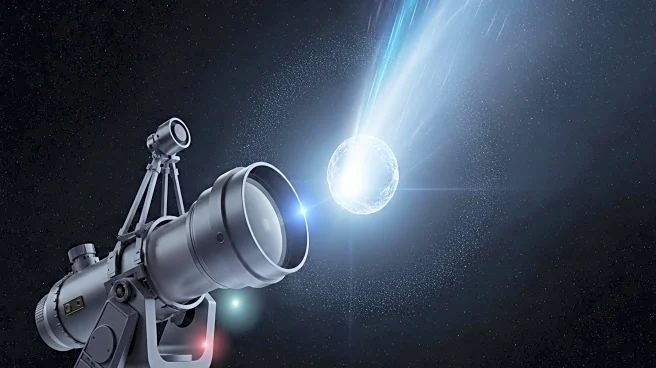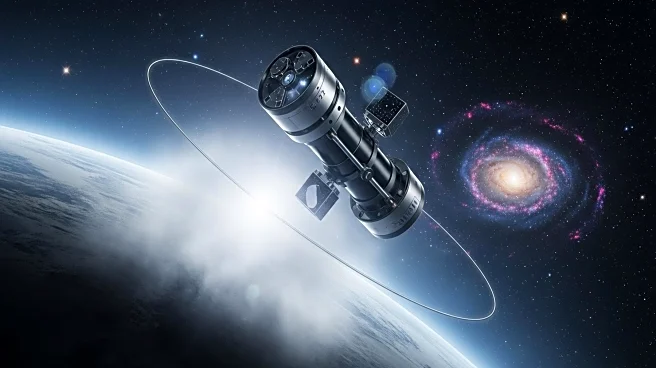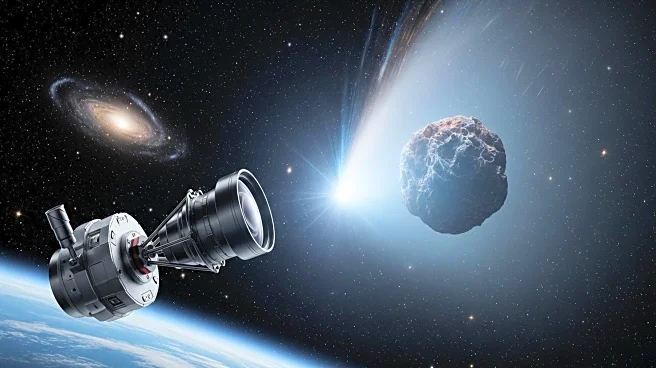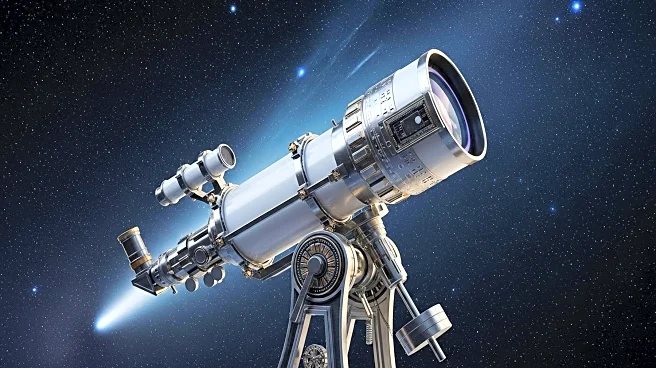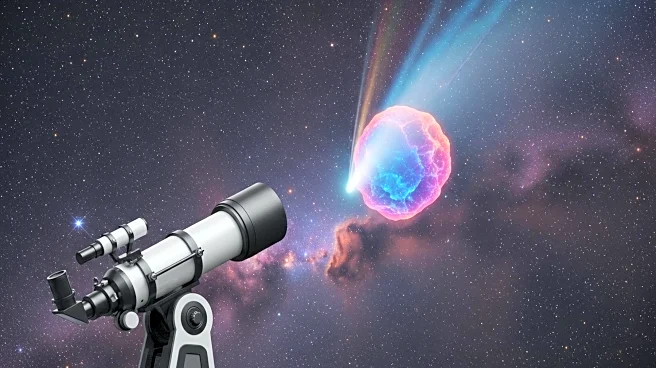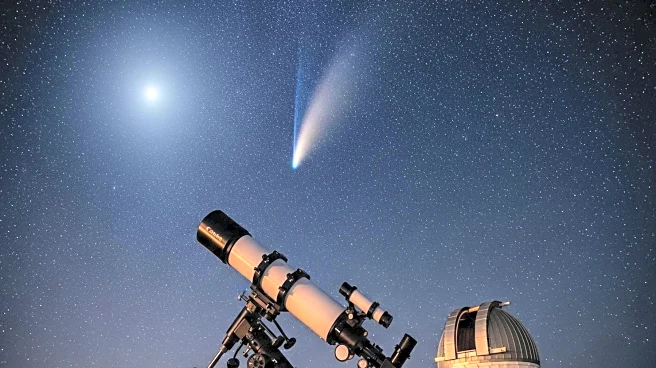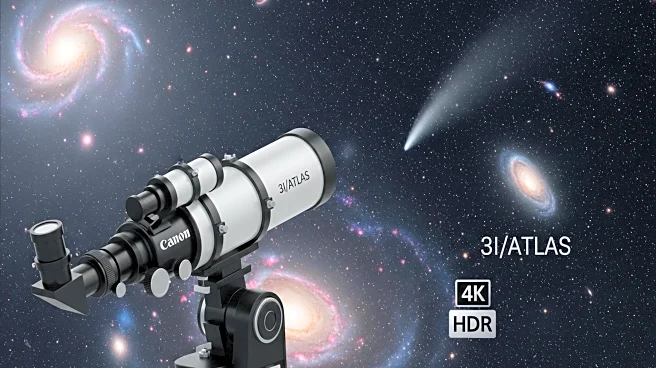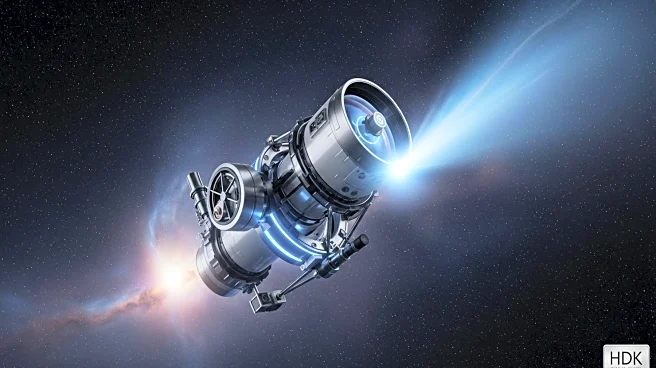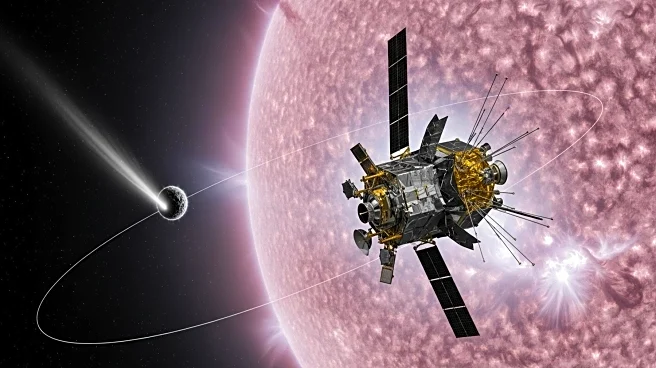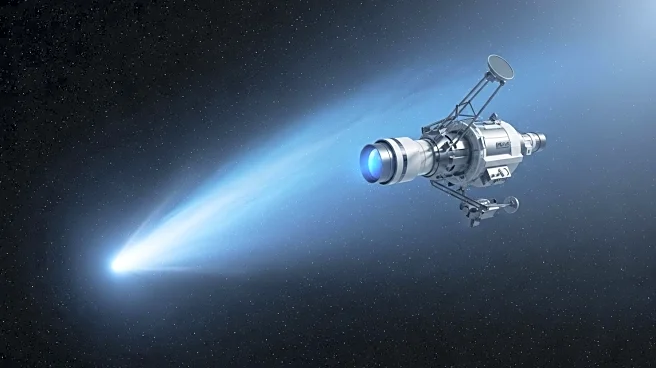What's Happening?
NASA's SPHEREx space observatory has detected a significant amount of carbon dioxide gas in the coma surrounding the interstellar comet 3I/ATLAS. This discovery marks a major step in understanding the composition of comets from other star systems compared to those in our solar system. The comet, which is not gravitationally bound by the sun, is the third known interstellar object to enter our solar system and is the largest and brightest one yet. SPHEREx's findings suggest that 3I/ATLAS behaves similarly to solar system comets, with vaporized carbon dioxide gas and water ice present in its nucleus. The comet is expected to reach its closest point to the sun in late October, which may lead to further sublimation of water ice and a stronger dust coma.
Why It's Important?
The detection of carbon dioxide in the coma of 3I/ATLAS provides valuable insights into the chemical composition of interstellar comets, which can help scientists understand the formation and evolution of celestial bodies beyond our solar system. This discovery could have implications for the study of cometary science and the broader field of astronomy, as it highlights the similarities and differences between interstellar and solar system comets. The findings may also contribute to the understanding of the conditions necessary for the formation of life-supporting planets.
What's Next?
As 3I/ATLAS approaches its perihelion, scientists expect further sublimation of water ice, which could lead to a larger water coma and a more pronounced dust tail. NASA's SPHEREx and other spacecraft will continue to monitor the comet closely, aiming to gather more data and insights into its composition and behavior. The SPHEREx team plans to publish a detailed paper on their findings, which could fuel further discoveries in the astronomical community.
